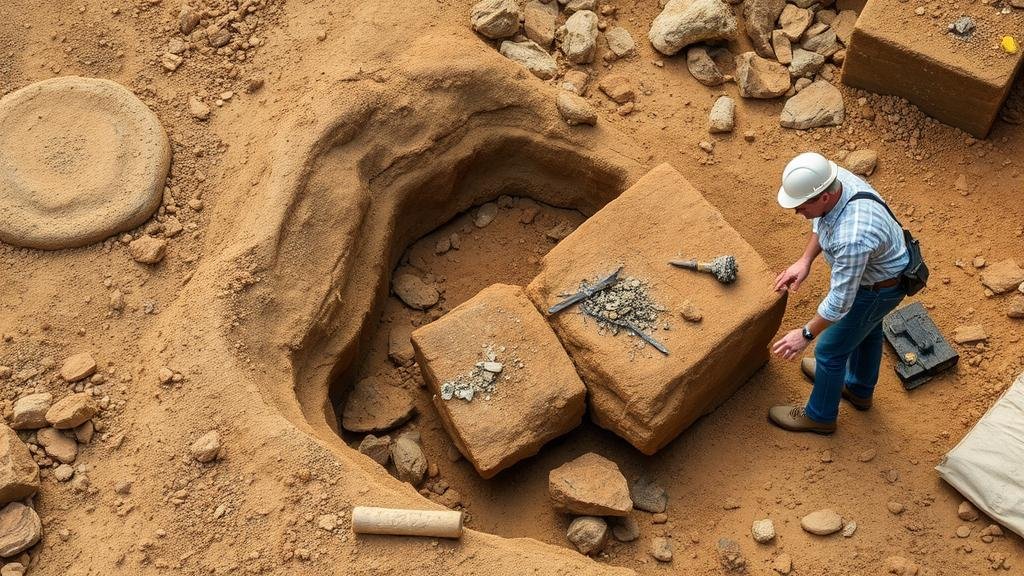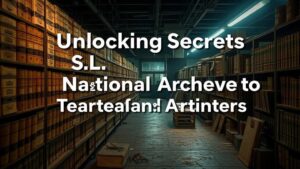Using AI to Automate Relic Discovery Analysis in Historical Mining Site Reports
Using AI to Automate Relic Discovery Analysis in Historical Mining Site Reports
The mining industry has significantly contributed to industrial development worldwide, yet many historical mining sites remain under-explored and their records untapped. This paper seeks to investigate the potential of Artificial Intelligence (AI) in automating the analysis of relic discovery in historical mining site reports. By harnessing machine learning algorithms and natural language processing techniques, researchers can systematically extract, analyze, and interpret vast amounts of data that would otherwise require extensive manual efforts.
The Importance of Historical Mining Sites
Mining sites, particularly those that operated during the 19th and 20th centuries, offer vast resources for understanding the socio-economic and environmental impacts of mining activities. For example, the Comstock Lode in Nevada spurred the development of mining technology and policies during the mid-1800s, ultimately revolutionizing mining practices. The historical reports from these sites often contain valuable information such as production data, labor conditions, environmental impacts, and relic discoveries.
According to a study by the Society for Historical Archaeology, over 80% of archaeological sites related to mining activities have not been thoroughly documented, posing a challenge for historians and archaeologists in uncovering significant findings. As historical mining reports consist of unstructured data, automating analysis can enhance the efficiency and accuracy of research efforts while improving accessibility to this vital historical information.
AI Techniques for Document Analysis
The adoption of AI in the analysis of historical mining reports can be categorized into various techniques, including machine learning, natural language processing (NLP), and data mining.
- Machine Learning: Algorithms can be trained to recognize patterns and classify information contained in mining reports. For example, supervised learning could enable models to predict locations of significant relic discoveries by analyzing historical context and data correlations.
- Natural Language Processing: NLP tools can convert text data from reports into structured information, identifying key terms, phrases, and entities related to mining activities.
- Data Mining: Data mining techniques can help researchers discover hidden patterns in large datasets which may yield insights about mining practices over time, potentially revealing connections between geographical trends and the presence of relics.
Case Studies and Applications
Several case studies illustrate the successful application of AI in automating relic discovery analysis:
- Case Study: The Gold Rush of 1849: Researchers utilized machine learning algorithms to analyze newspaper articles from this period, identifying locations of interest and correlating them with relic discoveries. This led to the identification of previously undocumented mining camps in California.
- Case Study: The Industrial Revolution: A study at the University of Pennsylvania employed NLP techniques to scan historical reports from coal mining operations in Pennsylvania, successfully extracting data that highlighted environmental consequences, labor conditions, and equipment used, in addition to relic findings.
Challenges in Useation
Despite the promising capabilities of AI, several challenges hinder its integration into historical research:
- Data Quality: Historical documents vary in quality and format, which may lead to inaccuracies in analysis if not addressed adequately.
- Need for Domain Expertise: Successful application of AI requires a combination of technological expertise and historical knowledge to ensure relevancy and accuracy.
- Ethical Considerations: The interpretation of AI findings needs to consider ethical frameworks, particularly in relation to cultural heritage and the representation of historical narratives.
Future Directions
The advancement of AI technology is expected to bring further innovations in how historical mining data is analyzed. As AI models become more sophisticated, they can offer deeper insights into the mining history and the associated relics through:
- Enhanced Algorithms: Ongoing improvements in AI algorithms will lead to better pattern recognition and data processing capabilities in resonating with historical contexts.
- Collaboration Across Disciplines: Interdisciplinary approaches combining artificial intelligence with archaeology, history, and environmental science can generate comprehensive understanding of mining legacies.
Conclusion
The integration of AI in the analysis of historical mining reports presents a transformative opportunity for researchers. By automating relic discovery analysis, artificial intelligence can uncover insights buried within unstructured data, ultimately fostering a better understanding of historical mining practices and their impacts on societies and environments. For researchers exploring mining history, employing AI not only enhances efficiency but also promises to enrich historical narratives and site management strategies.
Actionable Takeaways
- Explore partnerships with AI specialists to facilitate the analysis of historical mining reports.
- Invest in data cleaning and digitization efforts to enhance data quality for AI processing.
- Adopt multidisciplinary methodologies that encompass historical, technological, and ethical perspectives in research.



